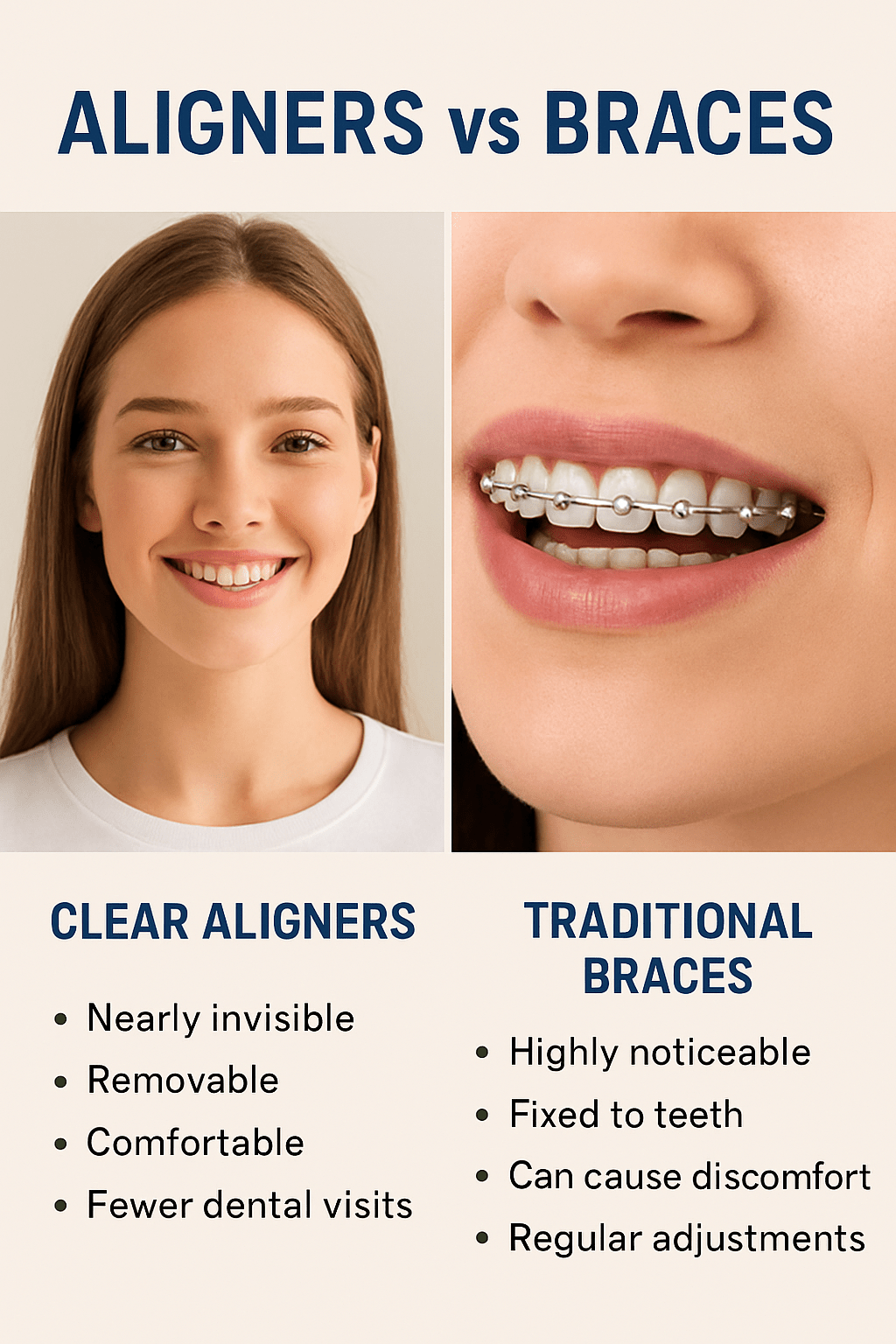Aligners vs Braces: Which Is Better for Your Smile?
If you’ve been thinking about straightening your teeth, you’ve probably come across two main options: clear aligners and traditional braces. Both can give you a straighter, healthier smile, but they work in different ways and come with unique pros and cons. In this blog, we’ll break down the key differences so you can decide which treatment is right for you.
What Are Braces?
Braces are the traditional method of orthodontic treatment. They consist of metal or ceramic brackets fixed to your teeth, connected with wires and bands that gradually shift your teeth into place.
Benefits of Braces
- Effective for even the most complex cases
- Always working — no need to remember to wear them
- Options available in ceramic or lingual for less visibility
Drawbacks of Braces
- Highly noticeable (especially metal braces)
- Can cause discomfort and mouth sores
- Make eating and brushing more difficult
- Food restrictions (avoid sticky or hard foods)
What Are Clear Aligners?
Clear aligners, like custom aligners from Teeth Straight, are removable, transparent trays that fit snugly over your teeth. They are designed to move your teeth gradually, similar to braces, but with a more discreet approach.
Benefits of Aligners
- Nearly invisible — most people won’t notice you’re wearing them
- Removable, making eating and oral hygiene easier
- More comfortable with no sharp brackets or wires
- Fewer dental visits required compared to braces
Drawbacks of Aligners
- Need to be worn 20–22 hours a day for best results
- May not be suitable for very complex orthodontic cases
- Easy to misplace if not stored properly
Cost Comparison
- Braces: Typically more affordable but vary by case complexity.
- Aligners: May be slightly higher in cost, but many people value the comfort and discreet look.
At Teeth Straight, we offer custom aligners designed to fit your lifestyle and budget — plus flexible payment options to make your smile journey easier.
Which One Should You Choose?
- If you want a discreet, comfortable, and flexible solution, aligners are a great choice.
- If you have a complex orthodontic case and don’t mind a visible treatment, braces might be better.
The best way to know is to get a professional assessment. At Teeth Straight, we offer a Free Smile Assessment so you can find out exactly what option suits you.
FAQs
1. Do aligners work as well as braces?
Yes. For mild to moderate cases, aligners are just as effective as braces. Complex cases may still need braces.
2. Are aligners painful?
Most people describe aligners as gentle pressure rather than pain. Any discomfort usually fades after a couple of days.
3. How long does treatment take?
Aligners typically take 4–12 months, while braces may take 18–24 months depending on the case.
4. Can I eat with aligners on?
No, you should remove them before eating or drinking anything other than water.
5. Are aligners more expensive than braces?
Costs vary, but aligners are often comparable to braces. Flexible payment plans are available.
Final Thoughts
Both aligners and braces can give you a confident smile. The right choice depends on your lifestyle, preferences, and orthodontic needs. If you value comfort, appearance, and flexibility, custom aligners may be the perfect solution for you.



